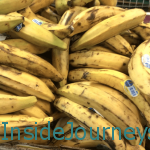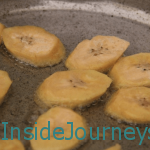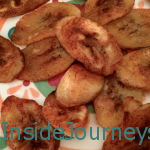It’s been years since I ate a coco bread, that soft, sweet, usually warm, folded-over bread that is the perfect folder for the flaky, spicy and usually hot, patty.
Perhaps it might seem redundant to marry a patty, a meat pie, with a puffy, buttery coco bread (one inventive student at my high school called the combination a coco-pat) but it works, somehow.
It’s like biting through layers of dough and finding a sweet spot — the spicy meat filling — the coco bread absorbing the heat that builds in the patties as they bake and tempering its spiciness.
The coco bread and patty combo is a filling, inexpensive on-the-go meal that is popular with everyone, from students to working people.
And because of its price, ubiquitous in Jamaica. Every fast food outlet and food shop sells it. The same is true here in the New York area. In fact, it is even sold online at amazon.com. Despite its popularity, no one I asked could explain why it’s called a coco bread since it’s not made from coconut or cocoa.
But coco bread shouldn’t be confined only to a meat filling. It’s delicious with cheese and, I would add, stews, even soup. And with its buttery flavor, it can even be eaten as is.
Yesterday, the distinctive fresh-baked smell of the coco bread tickled my nose and brought back such delightful memories, I stopped and bought one on the way to work. With a cold blast of winter air here in New York yesterday, instead of a patty, it made me feel for soup. Biting into its warm deliciousness took me momentarily back to the sun.
Have a foodie post you’d like to share? Join the #FoodieTuesday linkup and add it here –
- Add the link to your foodie post in the link tool below.
- As a courtesy, please include a link back to this post.
- To make it a fun linkup, don’t forget to leave a comment here and comment on as many posts as you can.
- If you Tweet, G+, Facebook please use the hashtag #FoodieTuesday.
[inlinkz_linkup id=454394 mode=1]























